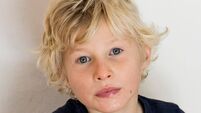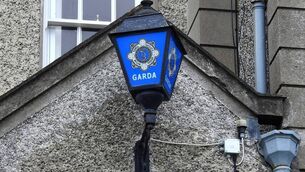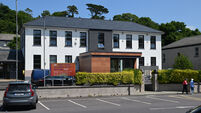Kerry study aims to measure storm impacts

The precision of the study will see a shoreline monitoring system installed at three sites. Picture: Don McMonagle
One of the most celebrated areas of natural beauty in Ireland, Kerry’s Brandon Bay, will be the focus of a major study aimed at measuring storm impacts and bolstering coastal defences.
One of the most respected academics in the world on coastal erosion, Dr Eugene Farrell of NUI Galway, will co-lead the project on the Dingle Peninsula.
It will see a new waverider buoy provided by Sustainable Energy Authority of Ireland to measure wave height, wave direction, wave period, surface currents, and water temperature as well as storm impact.
The precision of the study will see a shoreline monitoring system installed along Brandon Bay at three sites, which will capture images of the beach every 10 minutes during daylight hours over the next 12 months.
The purpose of the monitoring system is to identify the time periods when wave run-up is high enough to reach the dune toe and potentially cause coastal erosion, the researchers said.
The research, which is funded by Geological Survey Ireland, is timely as the climate crisis and extreme weather exacerbate erosion along Ireland’s coasts, with Munster proving particularly vulnerable in recent years.
In 2008, ferocious storms breached the dunes at Rossbeigh in Kerry, causing consternation as a gaping hole left hundreds of metres exposed, putting homes across the bay at risk.
That few hundred metres has now become more than a kilometre, which has given rise to even more concern about what the future holds.
The Maharees, near Castlegregory in Kerry, Ardmore in Waterford and Ballycotton in Cork have also seen the natural coastline noticeably eroded over the last decade.
Mr Farrell is a Cork native who lectures in the Department of Geography at NUI Galway.
He is the director of NUI Galway’s MSc Programme 'Coastal and Marine Environments: Physical Processes, Policy and Practice', and his expertise in coastal erosion is widely respected around the world.
On the latest project in the Dingle Peninsula, Mr Farrell said: “We want to improve existing coastal change models by developing better insights into why change occurs and how much change will occur if we dial up climate projections for rising sea levels and storminess."
It is already known that changes along the coast from elevated storm surge and wave run-up result in changes in seabed and beach elevations, according to Mr Farrell.
“The data captured by the waverider will play an integral part in dismantling the important connections between different storm types such as size, direction, duration, clustering and coastal response that allows us to share real-time ocean observations that can be used to address coastal erosion and coastal flood protection.”
The Marine Institute’s Alan Berry said the wave buoy at Brandon Bay will enable researchers to “observe and understand how our ocean is changing and determine how to respond to current and future patterns of change”.
He added: “Open access to this data on Ireland's Digital Ocean website is valuable to climate researchers in Ireland and across Europe."
In September, a coastal change working group was established within the Irish government and tasked with overseeing a report for a national coastal change management strategy.
Wave data results from the Brandon Bay Waverider project can be viewed at: www.digitalocean.ie.













